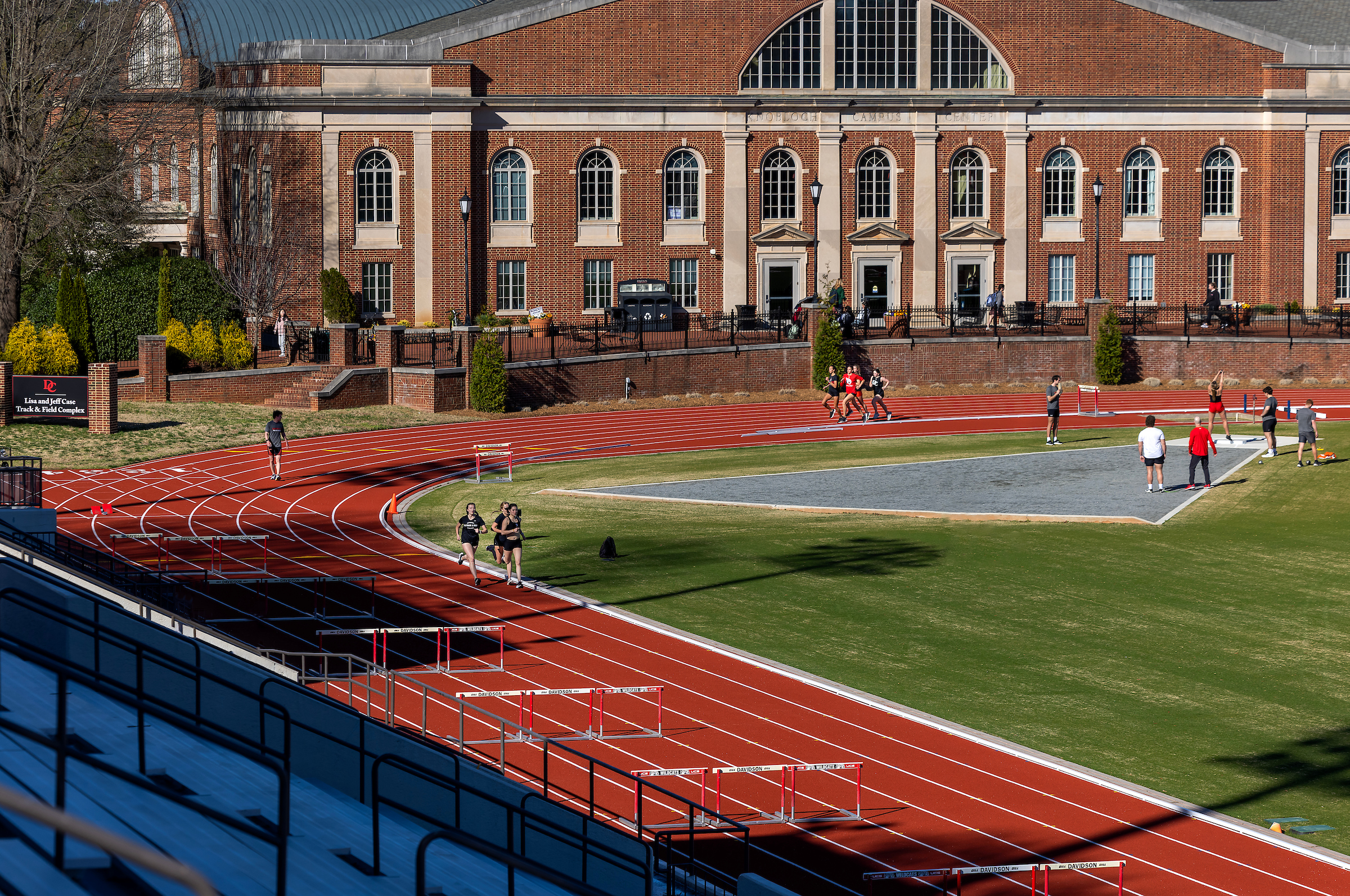Becca Taylor ’06 on Competitive Puzzling and “The Piece Corps” Championship
May 2, 2024
- Author
- Caroline Roy
When Becca Taylor ’06 came down with chicken pox as a young child, her parents gave her a 5,000-piece puzzle to distract her from scratching. She sat for hours, piecing together an image of lions and tigers, and a lifelong love of puzzling was born.
“I became obsessed,” she said. “Later, as a young adult, I’d go out and buy myself a god-awful 1,000-piece mandala or tapestry puzzle. I’d leave it out on my table for weeks at a time and solve it bit by bit.”
Taylor gravitates toward the puzzles most people hate — ones made up of tiny, identical pieces or a single, solid color. Every Christmas, her brother gives her the most challenging puzzle he can find. Despite decades of doing puzzles in her spare time, Taylor didn’t discover the world of competitive jigsaw puzzling until the fall of 2022, when she stumbled into a competition at a beach town wine bar.

Immediately, she noticed a tall, blonde woman wearing a World Championship puzzling T-shirt and thought she must be in over her head.
“I planned to just sip my wine and have a good time, but then I won,” Taylor said. “That was the first hint that I might have some proclivity for this.”
She was correct. In March, Taylor’s four-person team, The Piece Corps, took home first place at the 2024 USA Jigsaw Nationals after completing two 1,000 piece puzzles in one hour and 55 minutes.
After her first win at the wine bar, Susanne, the blonde woman who would later become Taylor’s close friend, told her all about the rapidly growing puzzling community.
The Wide World of Puzzling
Jigsaw puzzling first gained popularity as an American pastime during the Great Depression, but the cardboard puzzles we know today emerged in the following decades, when companies began distributing jigsaw advertisements for their consumers to build. While the competitive puzzling scene has existed for years, the community surged in popularity thanks to online exposure and the pandemic.
Today, speed puzzle competitions happen all the time, from small-town races to nationals to the annual World Jigsaw Puzzle Championship held in Valladolid, Spain. Larger competitions usually feature solo, pair and team races, with hundreds puzzling together in the same room.
Since 2022, Taylor has participated in a number of these races and tackled her first Worlds competition last year. With the help of her newfound friends in the puzzling world, she was able to quickly adapt her strategies and cut down her times.
“As this world grows, we’re always trying different strategies and combos to see what works,” she said. “I’ve found that I don’t do especially well individually, but I’m a really good utility player on a team. I gravitate toward repeating textures and patterns, the sections of a puzzle most people leave for last.”
Speed puzzling requires a different approach than puzzling for fun. She’s learned that the fastest competitors immediately flip all the pieces over and begin to sort them, all while familiarizing themselves with the image on the box. Team members must communicate the entire time, calling out which areas they plan to tackle.
Because their team lives scattered across the country, The Piece Corps only got to practice together once before Nationals. Fortunately, the two puzzles they were given played to the team’s strengths. The first incorporated busy, complicated patterns, and the second was an all-blue mandala puzzle — the kind Taylor often uses to practice.
After finding success early in her competitive puzzling career, Taylor is confident she will continue to improve her times, but she isn’t always racing.
“The biggest advice I’d give someone getting into this is just do a lot of puzzles, and do them for fun,” she said. “I don’t want to lose my love for the activity by making it something that is always about speed.”

The Nerd Herd and New Connections
The puzzling world extends far beyond competitions. Taylor’s new network of friends — which her father lovingly calls her “nerd herd” — attend puzzling conventions, puzzle building workshops and meetups at local breweries, libraries and game stores. Since posting her finished puzzles on Instagram, Taylor quickly accumulated more than 1,000 followers.
Taylor works full time at Stanford University and sees puzzling as a way to connect with her community outside of work. She and her friend, Rachel, run a puzzle swap four times a year, where 60 to 70 puzzle enthusiasts come together to exchange puzzles they’ve already completed.
She also brings puzzles to nearby retirement facilities for patients with degenerative brain diseases. Studies have shown that mentally-engaging activities like puzzling can help ameliorate symptoms of Alzheimers and dementia. It’s a small way to sharpen and engage the mind, a benefit of puzzling that Taylor can appreciate.
“I get this specific tingling feeling, like my brain is being exercised,” she said. “Even if I’m binging a terrible show in the background, it feels good to know I’m investing something in my own mind.”
As the activity gains popularity online and in communities across the world, Taylor hopes newcomers like herself feel welcomed into the scene. A Union Board member during her time at Davidson, she would often organize group games to help students unwind. Today, she sees potential for puzzling groups to take off on a campus like Davidson’s.
“There are new people coming out of the woodwork every day,” she said. “I think anyone intrigued by competitive puzzling should give it a try. I’ve felt so welcomed into this community. It’s joyful, and it’s allowed me to meet so many interesting people.”
Related Story
Washington Post: For Top Jigsaw Puzzlers, 500 Pieces In An Hour Is No Problem


